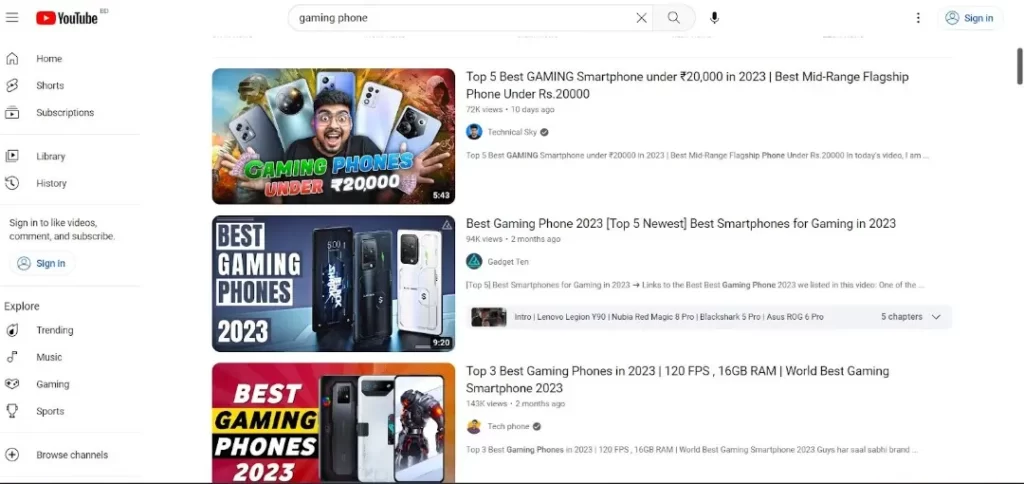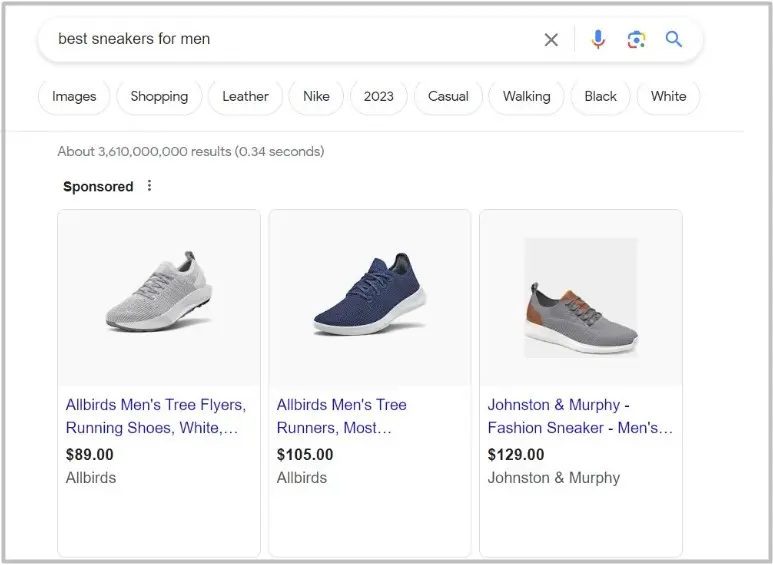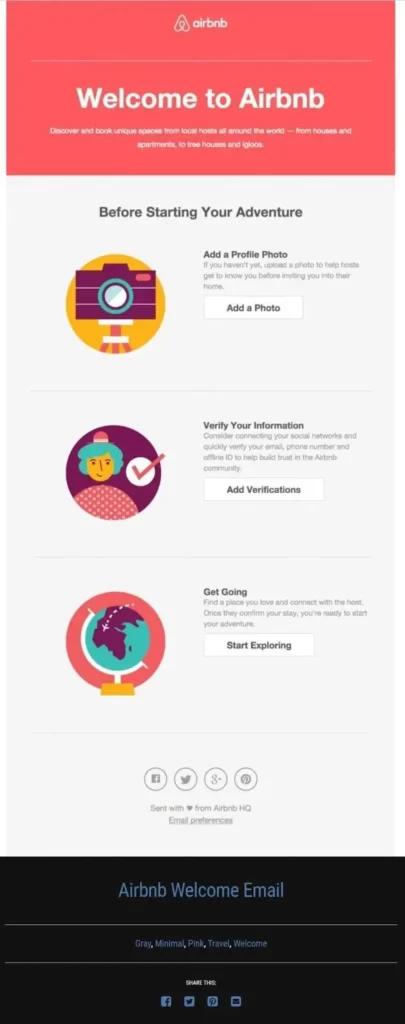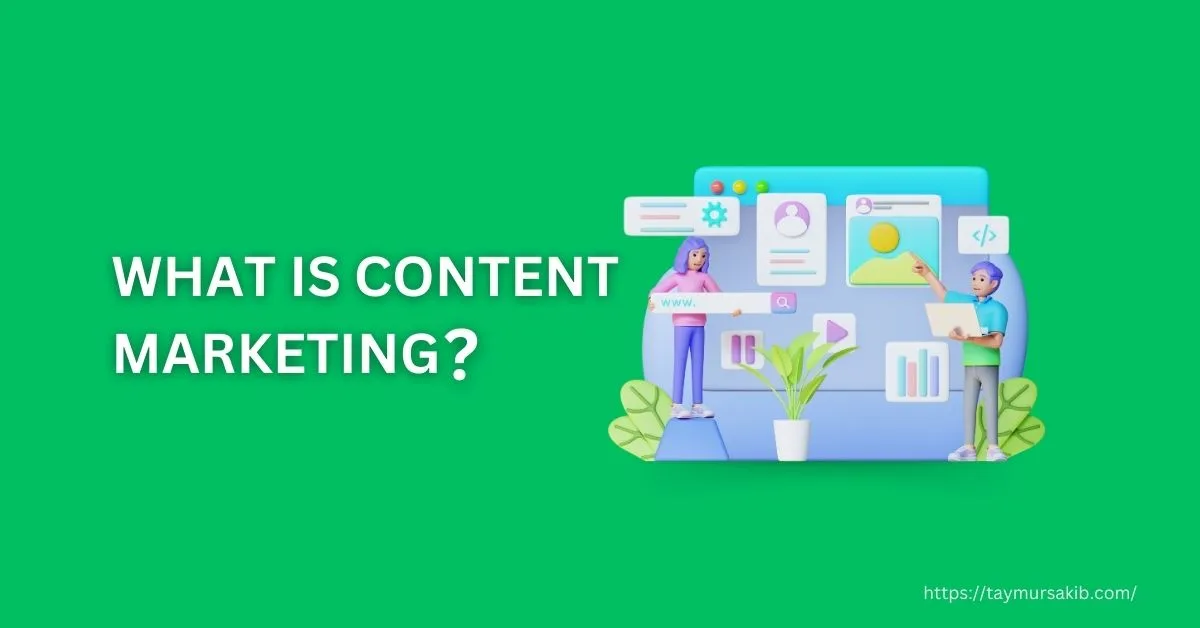What is Content Marketing: All You Need to Know
In today’s fast-paced digital age, where information is abundant and attention spans are short, businesses need a powerful tool to differentiate themselves and connect with their target audience.
That tool is content marketing. It involves creating and disseminating valuable, relevant, and compelling content to attract, inform, and ultimately convert potential customers into loyal advocates.
Content marketing goes beyond being a mere buzzword; It’s a strategic approach that enables businesses to cut through the noise and position themselves as trusted authorities in their respective industries.
This blog will delve into the realm of content marketing, explore its benefits, highlight different types of content, and uncover the secrets to creating a successful content marketing strategy.
Understanding Content Marketing
Content marketing is a potent strategy that holds the key to capturing the attention of your target audience in today’s digital landscape.
It goes beyond mere content production; it includes creating content that is valuable, relevant, and engaging, resonating with your audience. By comprehending the evolution of content marketing, you will gain insights into its true potential.
From its humble beginnings to the sophisticated storytelling techniques employed today, content marketing has evolved into an art form that captivates, educates, and influences consumers.
Dive deep into the fascinating world of content marketing to unlock the benefits and discover how it can transform your business.
Benefits of Content Marketing
Content marketing offers numerous advantages for businesses aiming to establish a robust online presence and connect with their target audience. By strategically creating and distributing valuable content, companies can unlock a world of opportunities.
Building Brand Awareness: Content marketing acts as a powerful tool for building brand awareness. By consistently delivering valuable content to your target audience, you can enhance visibility and establish your brand as a trusted authority.
Informative blog posts, engaging videos, and compelling social media content have the potential to capture attention and leave a lasting impression.
Driving Customer Engagement:
Content marketing serves as a catalyst for driving customer engagement. By creating content that resonates with your audience, you can foster a sense of connection and build relationships.
Encouraging comments, shares, and interactions amplify your reach and foster a community around your brand.
Generating Leads and Conversions: Content marketing plays a crucial role in generating leads and conversions. By offering valuable resources such as ebooks or whitepapers, you can capture contact information from interested prospects.
With a strategic approach to content, you can nurture leads throughout the customer journey, providing relevant and helpful information that ultimately leads to conversions.
Exploring Different Types of Content Marketing
Content marketing encompasses various components, each playing a crucial role in its success. Let’s explore the key elements of content marketing:
- Strategy and Planning: A well-defined content marketing strategy is the foundation of success. It involves identifying goals, defining target audience personas, conducting market research, and developing a plan to create and distribute content aligned with business objectives.
- SEO: By conducting keyword research and optimizing content with relevant keywords, businesses can improve their visibility in search engine results, drive organic traffic, and attract a larger audience.
- Written Content: This includes blog posts, articles, whitepapers, and ebooks. Written content enables businesses to provide in-depth information, share industry insights, and establish thought leadership.
- Visual Content: Visuals have a powerful impact on audience engagement. Infographics present complex information in a visually appealing and easily digestible format. Videos and podcasts offer engaging storytelling opportunities, capturing attention and effectively conveying messages.
- Social Media Content: Social media platforms provide businesses with a space to share bite-sized content, including images, short videos, and text-based posts. It allows for real-time interaction, amplification through sharing, and fostering a sense of community.
- Interactive Content: Interactive content engages the audience by encouraging active participation. Quizzes, surveys, calculators, and interactive infographics prompt users to interact, providing personalized experiences and valuable insights.
- User-Generated Content (UGC): UGC involves leveraging content created by customers, such as reviews, testimonials, and social media posts. UGC builds trust, social proof, and authenticity around a brand.
- PPC: Great content is essential for the success of pay-per-click (PPC) advertising campaigns.
- Inbound Marketing: Inbound marketing heavily relies on content to generate inbound traffic and leads.
Related: A Complete SEO Strategy Guideline For Higher-Ranking
How does Content Marketing Work?
Content marketers engage audiences through captivating stories and valuable information, utilizing content channels to foster community. Content marketing goes beyond techniques; it’s a distinct form of communication. To address different needs at each buying stage, consider your conversion funnel.
Top of Funnel (ToFu)
Definition and Purpose: The concept of the top of the funnel in content marketing is to attract and engage a wide audience.
Content Types and Strategies:
Blog Posts: Craft informative and engaging blog posts that address common pain points or provide valuable tips.
Outcome: By consistently delivering valuable blog content, businesses can establish themselves as industry experts, increase brand visibility, and attract a larger audience.
Social Media Content: Share relevant and engaging content on social media platforms to capture attention and encourage interaction.
Outcome: Social media content helps businesses broaden their reach, spark conversations, and drive traffic to their website or other content platforms.
Middle of Funnel (MoFu)
Definition and Purpose: The middle of the funnel stage focuses on nurturing and educating prospects.
Content Types and Strategies:
- Case Studies: Present real-life examples of how your product or service has solved problems for customers.
- Outcome: Case studies showcase your expertise, build trust with potential customers, and demonstrate the value you can provide.
- Email Newsletters: Send targeted and personalized email newsletters with valuable content, offers, and updates.
- Outcome: Email newsletters help nurture leads, maintain brand awareness, and drive repeat visits or purchases.
Bottom of Funnel (BoFu)
Definition and Purpose: The bottom of the funnel stage emphasizes converting leads into customers.
Content Types and Strategies:
- Product Demonstrations: Provide detailed demonstrations or video tutorials showcasing your product’s features and benefits.
- Outcome: Product demonstrations help potential customers understand how your product can meet their specific needs, increasing the likelihood of conversion.
- Customer Testimonials: Share testimonials or reviews from satisfied customers to build trust and social proof.
- Outcome: Customer testimonials provide social validation, addressing any concerns or doubts potential customers may have and encouraging them to make a purchase.
By strategically creating and distributing content tailored to each stage of the funnel, businesses can attract, engage, educate, and convert prospects into loyal customers.
Content marketing works by guiding individuals through the buyer’s journey, providing them with the information and support they need at each stage, and ultimately driving meaningful outcomes for the business.
Examples of Content Marketing
Content marketing is a strategic marketing approach focused on creating and distributing valuable, relevant, and consistent content to attract and retain a clearly defined audience — and, ultimately, to drive profitable customer action.
Here are some examples of content marketing:
1. Example of Blog Written Content Marketing

Blog posts and articles serve as excellent mediums for delivering informative and engaging content to the target audience.
They can cover a variety of topics, ranging from educational pieces to industry trends and expert opinions. By consistently publishing well-written blog posts and articles, businesses can demonstrate their expertise, attract organic traffic to their website, and build a loyal readership.
White Papers and Ebooks, on the other hand, offer a deeper dive into specific subjects, providing comprehensive analysis, research findings, and solutions to industry challenges.
These longer-form written content pieces are often utilized to showcase thought leadership, generate leads, and nurture prospects through the sales funnel. By offering valuable insights and actionable knowledge, businesses can establish trust, and credibility, and position themselves as industry authorities.
Written content plays a crucial role in content marketing by providing businesses with a platform to share their knowledge, connect with their audience, and build strong relationships based on trust and expertise.
2. Example of Instagram Marketing as SMM

Tatcha’s Instagram account seamlessly reflects the brand’s image and marketing content. Even without explicitly mentioning the company name, it is easily recognizable as Tatcha’s page.
The Instagram profile effectively promotes its product range through visually appealing posts, showcasing how each product can be utilized. With a distinct feel and appearance, the account appeals to Tatcha’s diverse consumer base.
3. Example of Video Content Marketing

YouTube serves as a prime illustration of video content marketing, as businesses take advantage of its extensive audience and high engagement to promote their products and services. Through captivating video content, companies can effectively reach and connect with their intended audience, thereby enhancing brand awareness, engagement, and conversions.
4. Example of Paid Ads Content Marketing

Paid advertising content marketing via Google is another notable example. By leveraging Google’s platform, businesses can harness the power of video marketing. The platform offers extensive reach and precise targeting capabilities, enabling companies to connect with their desired audience. While Google stands out as a popular choice, there exist various other paid advertising channels that businesses can explore to drive their content marketing initiatives.
5. Example of Email Content Marketing

Image source: Airbnb
Email content marketing provides another effective strategy employed by digital marketing agencies.
These agencies send informative newsletters to their subscribers, featuring industry insights, practical tips, and case studies. Each email includes relevant blog articles, video tutorials, and announcements about upcoming webinars.
By delivering valuable content, these agencies establish thought leadership, nurture leads, and encourage engagement with their services, resulting in increased client acquisition and retention.
5 Steps to Create a Perfect Content Marketing Strategy
A content marketing strategy acts as a guiding compass for your marketing endeavors. It outlines the purpose, target audience, and implementation plan for your content.
A well-crafted strategy sets goals, establishes measurable metrics, and provides a framework for continuous improvement.
Follow these five steps to shape your winning strategy:
Step 1: Define Your Goals and Objectives
The first step involves clearly defining the overarching business goals that content marketing aims to achieve.
These goals may include increasing brand awareness, driving website traffic, boosting lead generation, or enhancing customer loyalty.
It is important to ensure that content marketing goals align with broader marketing objectives and support the overall business strategy, promoting a cohesive and integrated approach to marketing efforts.
By employing the SMART framework, which emphasizes setting specific, measurable, attainable, relevant, and time-bound goals, businesses can establish clear targets and benchmarks for measuring content marketing success. SMART goals foster focus, and accountability, and provide a roadmap for the strategy.
Step 2: Understand Your Target Audience
Understanding the target audience plays a crucial role in creating a successful content marketing strategy.
This involves developing detailed buyer personas that represent the ideal customers, incorporating demographic information, preferences, pain points, motivations, and behaviors.
Conducting thorough market research using surveys, interviews, and social media analytics helps gather valuable insights about the target audience’s needs, challenges, and preferences.
By empathizing with the audience and comprehending their aspirations, fears, and desires, businesses can create content that directly addresses their needs, builds trust, and fosters long-lasting relationships.
Tailoring content marketing efforts to meet specific audience needs and preferences ultimately drives engagement, conversions, and brand loyalty.
Step 3: Create and Distribute Valuable Content
Creating and distributing valuable content that aligns with the audience’s interests and addresses their pain points is the next crucial step.
This encompasses various formats such as blog posts, articles, videos, infographics, podcasts, and social media content.
Considering the preferences of the target audience, businesses should choose formats that resonate with them, employing a mix of formats to cater to different preferences and learning styles. Identifying the most effective channels and platforms to reach the target audience is essential.
Make sure you’re not forgetting to do Content Optimization
Incorporate search engine optimization (SEO) techniques to enhance the discoverability of your content. Conduct keyword research and optimize your content with relevant keywords, meta tags, and headings to improve search engine rankings and attract organic traffic.
Strategic distribution of content through websites, social media platforms, email newsletters, guest blogging, and partnerships maximizes its reach and impact.
Consistently providing value and tailoring content to meet audience needs throughout their buyer’s journey is key to attracting and engaging the audience, establishing thought leadership, and driving traffic and conversions.
Step 4: Measure and Analyze Performance
- Determine key metrics: Identify the relevant metrics that align with your content marketing objectives, such as website traffic, engagement, conversions, and customer retention.
- Utilize analytics tools: Employ robust analytics tools like Google Analytics, social media insights, and marketing automation platforms to monitor and analyze the performance of your content.
- Insights from data analysis: Interpret the collected data to gain valuable insights into audience behavior, content effectiveness, and campaign performance.
- Optimization based on findings: Make informed decisions to optimize your content strategy, distribution channels, and targeting approaches in order to enhance results and achieve better outcomes.
- Regular reporting: Generate regular reports to track progress, share insights, and communicate the impact of your content marketing efforts with key stakeholders.
Step 5: Continuous Improvement
Consider the following points for continuous Improvements:
- Emphasize continuous improvement: Recognize that content marketing is an iterative process and highlight the importance of consistently improving your strategy.
- Learn from data and feedback: Analyze performance data, gather feedback from your audience, and identify areas for enhancement.
- Adapt and optimize: Utilize insights gained from data analysis and feedback to make necessary adjustments and optimize your content marketing efforts.
- Experiment and innovate: Foster a culture of experimentation, test new ideas, explore emerging trends, and stay ahead of the competition.
- Stay agile and adaptable: Acknowledge that content marketing is dynamic, so be flexible in adapting your strategy based on changing audience needs, market trends, and emerging platforms.
By continually iterating, learning, and innovating, you can refine your content marketing strategy, deliver even more valuable content to your audience, and achieve greater success in reaching your goals.
The Way You Can Measure the Success of Content Marketing Strategy
To evaluate the success of your content marketing strategy, there are several key metrics and analytical tools that can be utilized. Here are effective ways to measure content marketing success:
- Website Traffic: Monitor the overall traffic to your website and observe if there are any significant increases in visits, page views, or unique visitors. This indicates the effectiveness of your content in attracting and engaging your audience.
- Engagement Metrics: Analyze metrics related to engagement, such as time spent on the page, bounce rate, and social media shares. Higher engagement signifies that your content is resonating with your audience and encouraging interaction.
- Conversion Rates: Track the conversion rates for specific content goals, such as email sign-ups, form submissions, or product purchases. By measuring conversions, you can assess how effectively your content is driving desired actions.
- SEO Performance: Monitor your search engine rankings and organic search traffic. Improvements in search visibility indicate that your content is optimized for relevant keywords and attracting organic traffic.
- Social Media Metrics: Track engagement, reach, and follower growth on your social media platforms. Analyze the impact of your content by assessing the number of likes, comments, shares, and the growth of your social media community.
- Backlinks and Referral Traffic: Evaluate the number and quality of backlinks your content has generated, as well as the referral traffic from other websites. This indicates that your content is valued and trusted within your industry.
- Customer Feedback: Collect feedback from your audience through surveys, comments, or direct messages. Understand their perceptions of your content, whether it has helped them, and if they find it valuable.
Utilize analytics tools like Google Analytics, social media insights, email marketing platforms, and content management systems to gather and analyze data related to these metrics. Regularly review and assess the data to identify trends, evaluate the success of your content marketing efforts, and make informed decisions for future improvements.
Conclusion
Content marketing is a potent strategy centered around creating and distributing valuable, relevant, and consistent content to attract, engage, and convert a target audience.
By providing informative and engaging content, businesses can establish themselves as industry leaders, build brand awareness, foster customer relationships, and drive conversions.
Through various mediums such as blog posts, videos, social media content, and more, content marketing enables businesses to connect with their audience on a deeper level, address their needs, and provide solutions.
By implementing a well-crafted content marketing strategy, businesses can effectively navigate the digital landscape, reach their marketing goals, and ultimately achieve long-term success in an ever-evolving digital world.

